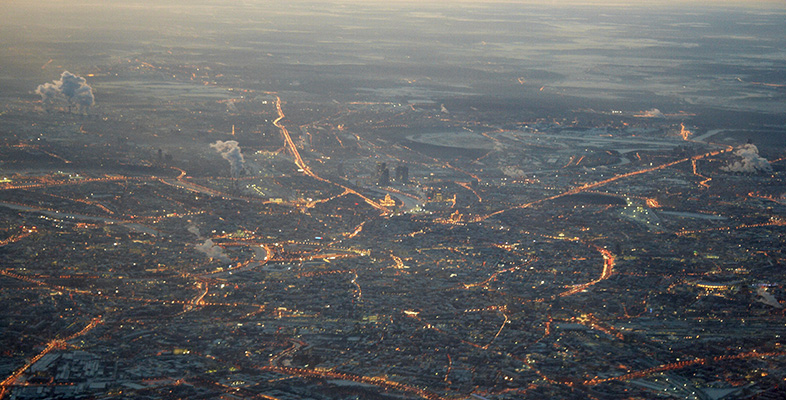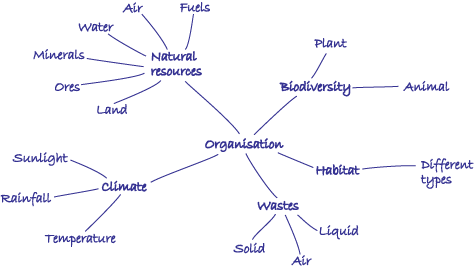11 Reflecting on organisations and environment
In reflecting on how an organisation might be linked to its environment, the focus is on the ‘natural’ environment (rather than environment of an organisation in a system sense). Activity 12 will help you clarify your own thinking about this.
Activity 12 Draw a spray diagram
Draw a spray diagram of the main ways in which you think organisations might be linked to the environment.
(Note: guidance on drawing spray diagrams is available in the Guide to Diagrams [Tip: hold Ctrl and click a link to open it in a new tab. (Hide tip)] .)
Discussion
My diagram shows a range of links relating to resources, biodiversity, climate and so on. The headings are quite generic and would vary considerably according to the type of organisation, its activities and its location. After drawing it, I’m not sure that ‘wastes’ is the same type of link as the others – it seems to be in a different category to the others since it is produced by the organisation. Perhaps the next iteration would explore links relating to inputs to the organisation and links relating to the outputs of the organisation.
Unless the organisation exists in a vacuum, it is unavoidable that some kind of relationship exists between an organisation and the natural environment. Your spray diagram will probably have included items relating to energy supply, water, resources for materials, atmospheric emissions of some sort and possibly waste. Maybe you also included the physical space they occupy.
You may have noted that the links can relate to the things an organisation needs to exist as an entity and also to perform their various roles and activities – e.g. land and water for the organisation to exist, and raw materials for making some kind of product. An organisation can thus be both dependent on its environment and also have significant impacts upon it (although the dependency and impacts may not occur in the same geographic locale of natural environment). It is quite difficult to see this from a spray diagram. An alternative way of structuring and representing the range of relationships between an organisation and the environment is to use an input–output model.

